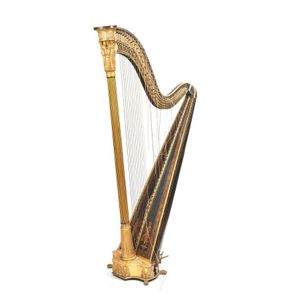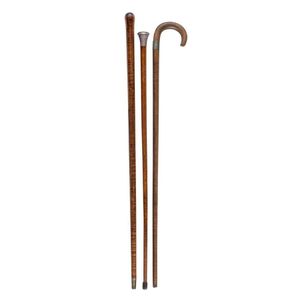Regency Erard Harp, 1820
You must be a subscriber, and be logged in to view price and dealer details.
Subscribe Now to view actual auction price for this item
When you subscribe, you have the option of setting the currency in which to display prices to $Au, $US, $NZ or Stg.
- Pen Work - Pen work is a type of decoration on Japanned (black lacquered) furniture and smaller objects that was popular in the late eighteenth and early nineteenth century. The decoration was painted on to the black lacquered surface in white and details and shading was added in black Indian ink, with Oriental scenes popular.
- Erard - The distinguished Parisian firm Erard?s, makers of harps and pianos, were in business between 1777 and 1960.
The business was founded by Sebastien Erard, who had been apprentice to a Parisian harpsichord maker for two years before establishing his own workshop in the rue de Bourbon. In 1786 the company expanded by opening a branch in London, and in 1789 his brother Jean-Baptiste joined as partner.
Sebastien Erard obtained a number of patent registrations in both England and France, for design innovations to both the harp and piano, the most important being for the double-action harp in 1810, the forerunner to today's concert harp. - Putto / Putti / Amorino / Amorini - A putto (plural: putti) or amerino (plural: amerini) is a cherub or cupid frequently appearing in both mythological and religious paintings and sculpture, especially of the Renaissance and Baroque periods and later used as a decorative element in the design of furniture, ceramics, statuary etc. They are usually depicted as chubby males, or of indeterminate gender, often with wings. Their depiction may represent an association with love, heaven, peace or prosperity.
- Anthemion - An anthemion is a classical decorative design element based on the acanthus flower that consists of a central circular or oval motif surrounded by radiating petals or leaves. It is often used as a border or frieze in architecture, furniture, and other decorative arts. The anthemion is derived from the palmette, a motif that was popular in ancient Greek and Roman art and architecture. It is often associated with the classical world and with Neoclassical style, and it is often used to add a sense of grandeur and formality to a design. The anthemion is also known as a honeysuckle or honeysuckle ornament. It continues to be used in a variety of contexts today, and it is often admired for its elegant and decorative qualities.
- Regency Period - The Regency period in English furniture design refers to the period when King George III, was declared unfit to rule in 1811, and his son ruled as proxy as Prince Regent, until 1820, and then, after the death of his father as George IV until his death in 1830. The Regency period was preceded by the Georgian period (George I, George II, and George III: 1714 - 1811), and was followed by the William IV period, which only lasted until 1837 when William IV died as was succeeded by Queen Victoria.
This item has been included into following indexes:
Visually similar items

A carved and gilded harp by Sebastian Erard, English, 19th century, inscribed to the plate Sebastian Erard's patent n2710 18 Great Marlborough St London, 170 cm high

New Caledonian Kanak club domed hooded top; tapering cylindrical shaft; fine incised decoration to top. Handle bound with original early cloth and fine sennit binding. Good overall condition. Length 76 cm. Diameter 9 cm

A gold, diamond and seedpearl brooch The jewelled gold novelty brooch designed as a harp, length approximately 59 mm. Property from the Collection of Dame Nellie Melba GBE

Three silver mounted blackwood walking canes, Australia, 19th/20th century, the tallest 89 cm
